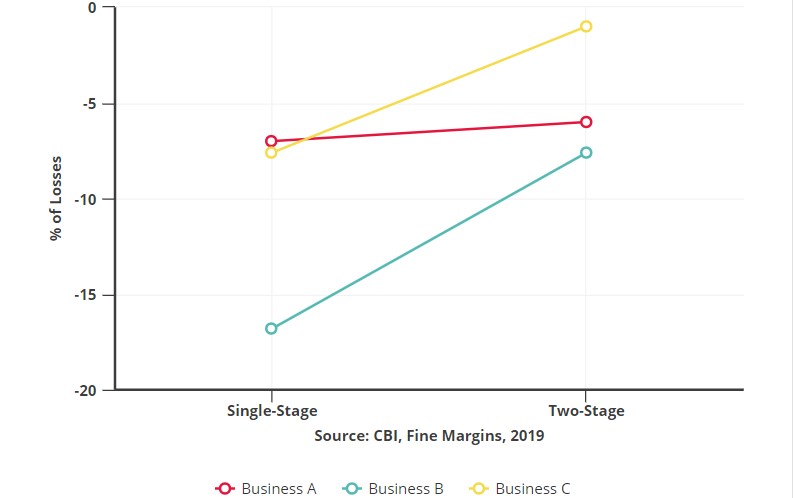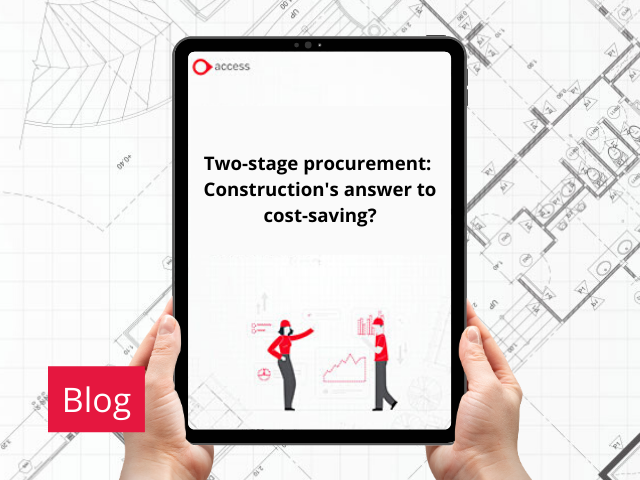The Access Group discusses its guide to cost-saving with estimating software – a crucial step for using two-stage procurement in construction
Margins are notoriously slim in the world of construction, and this was further confirmed by the Construction of British Industry’s recent report, ‘Fine Margins’. In the UK, they found that profitability across all industries is 17.9%, whereas the 100 top construction firms reported just 2.6% profitability in 2018.
The average payment time for invoices in construction is 43 days, 13 days over the fine threshold, so it isn’t hard to see how time delays such as this can cause a knock-on effect that leads to profits dwindling at every stage.
Slow and steady wins the race
Interestingly, the old phrase might have legs when it comes to construction. The CBI and Oxford School of Economics conducted a study to see how margins and timescales were affected when companies chose to undergo a two-stage procurement process rather than usual single-stage procurement.

All businesses experienced a decrease in losses throughout the project by implementing a two-stage procurement process, as shown by the chart. Whilst all results are positive, Business C almost managed to eliminate losses just by changing the tender process.
So if this is the case, why aren’t more construction companies implementing this?
Old habits die hard
In short, it isn’t as simple as just ‘switching’ to a two-stage process, it involves a wider mindset change from a business, and those bidding, for two-stage procurement in construction to work.
The temptation is still there for a contractor to submit a low bid in order to win the business, as is the temptation for the business to accept the lowest bid in order to save money. However, there needs to be a look towards the bigger picture when receiving and submitting tenders.
Software can help
Low-balling is costing the industry money, but it often isn’t realised until projects and payments become delayed. Construction News found that the average proportion of invoices not paid to the terms originally set out is 28%.
Investing in an estimating and QS software can help give you the overviews and insights that your business needs to make informed decisions about tenders and the overall project. Ensuring accuracy is paramount – estimating software helps you build your BoQ, manage and compare subcontractor prices, control information flow between you and subcontractors, have an audit trail of revisions and cost of changes making sure your business can accurately predict project costs.
Intuitive estimating software allows you to quickly flag up any bids that are unusually low or high while giving you complete visibility of all submitted bids. Using this alongside a two-stage procurement process, you could elevate the tender process to ensure you end up with thorough, accurate bids that give you a real indication of project costs, timescales, and any eventualities.
Adding an extra stage into the tendering process may seem like it’s eating into a project’s time, but implementing it alongside specialised software costs you less in the long run. Any decisions or errors made in initial stages can hinder a successful project. The evidence from the CBI shows that taking time early on is essential to save you money in the long run – proving that projects are marathons and not sprints.















